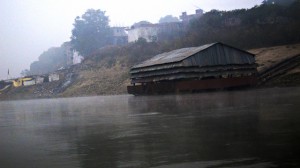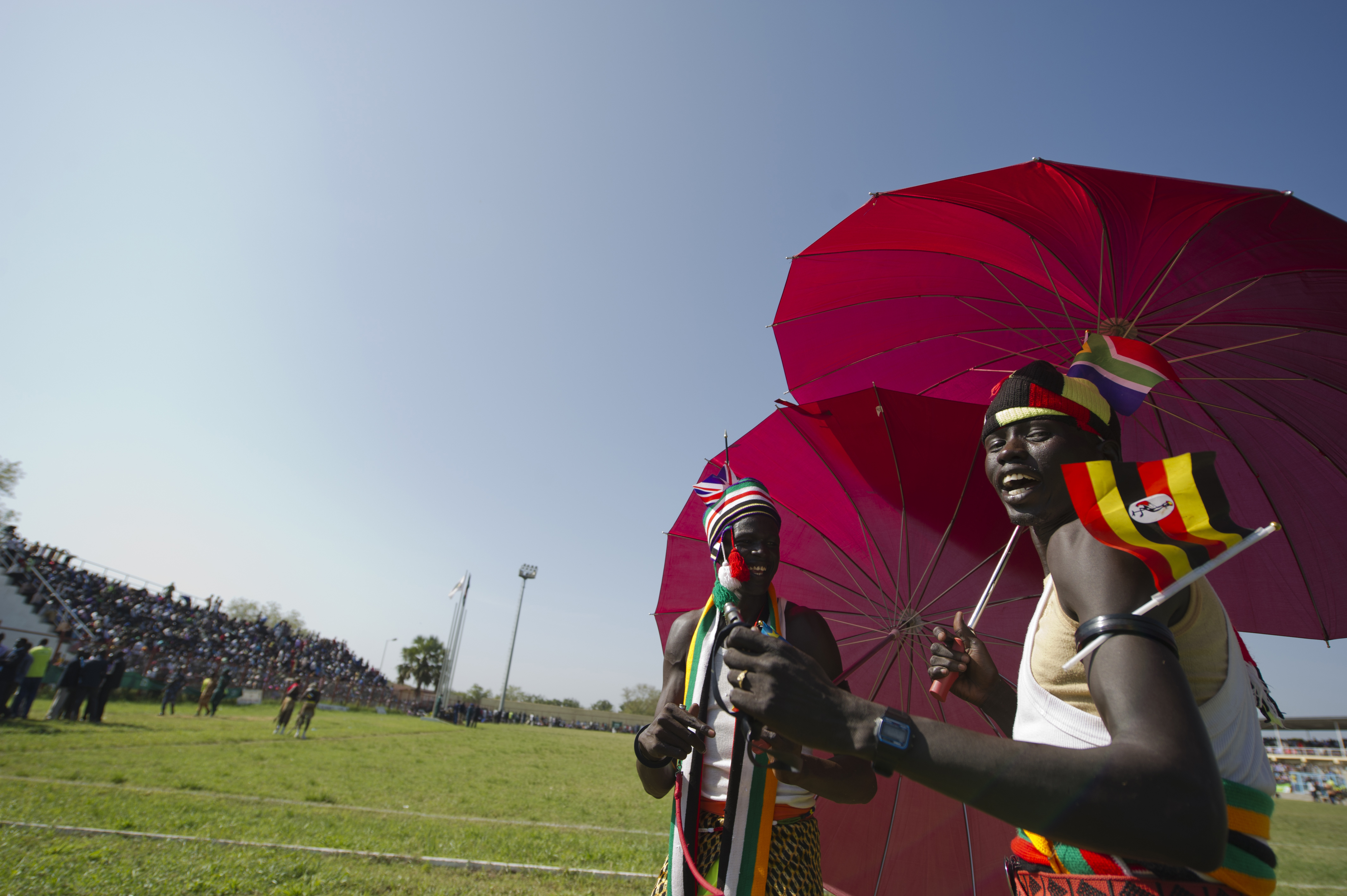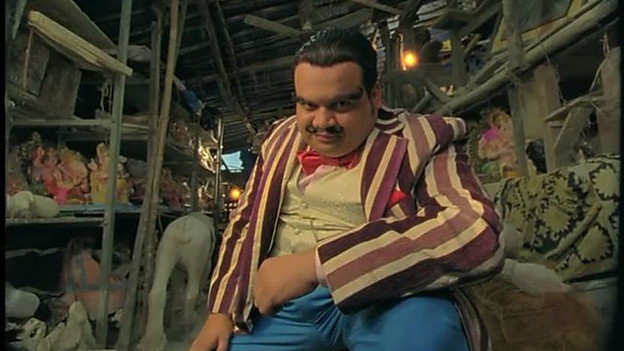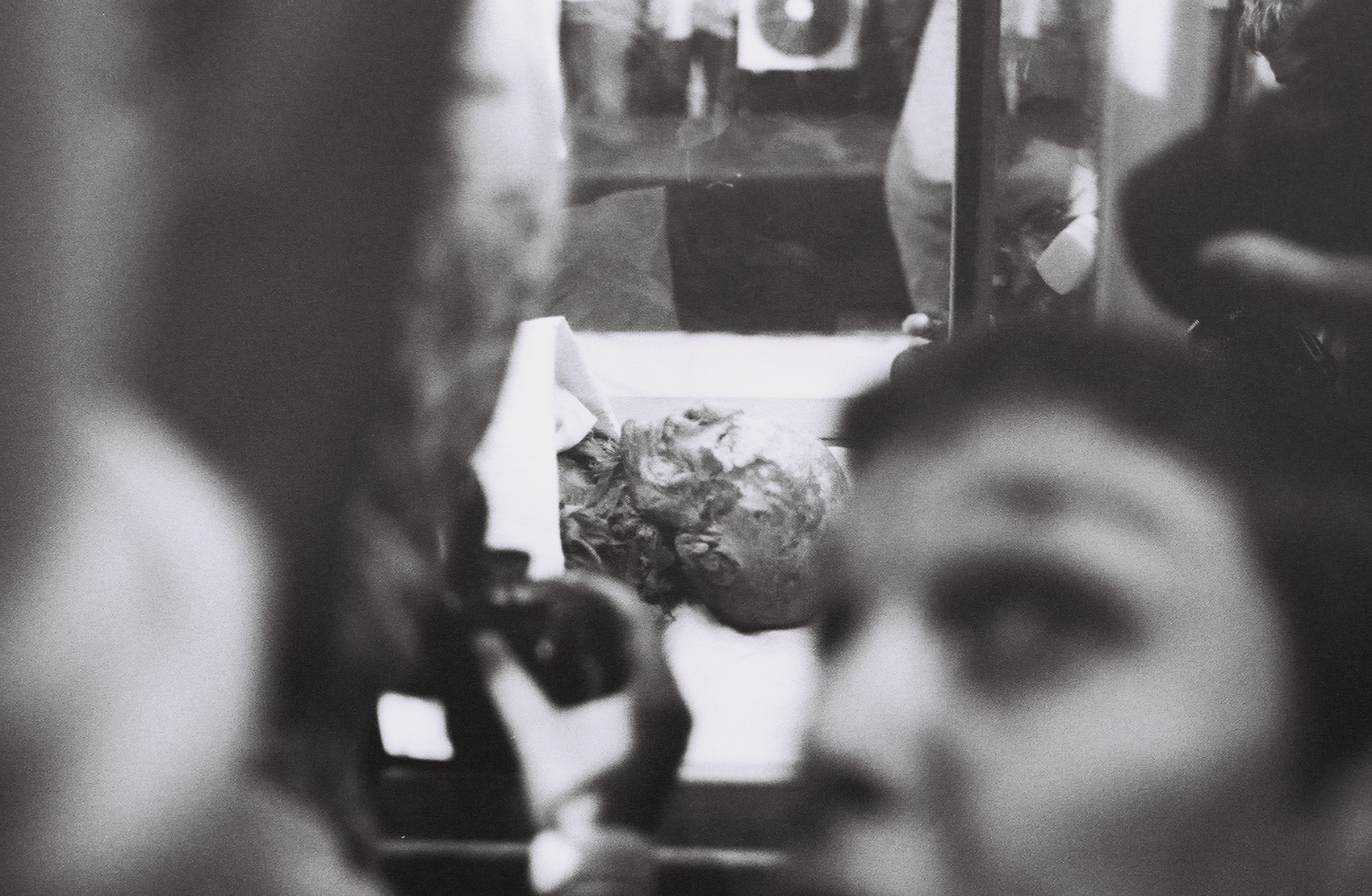Three from the NatGeo blog: On the trail of endangered pangolins from Africa to restaurants in China; wrestling as peacebuilding in South Sudan; and an unprecedented scientific investigation into neonatal death in Bangladesh, India, and Pakistan.
In India, it’s Mr. Sputum to the Rescue
This post first appeared at NatGeo NewsWatch.
PATNA, India – Perched high on a rooftop amid the pollution and noise of a vibrant Indian city, a new kind of superhero listens for signs of the enemy.
His ears tuned to an array of elaborately curved trumpets, Bulgam Bhai strains to hear the ever-present danger and then pounces. When an Indian coughs, this jocular public health avenger — all candy stripes and waxed mustache –- appears in a flash with a potentially life-saving question:
“Has it been two weeks?”
Opium! Intimate Skin-Bleaching! Egyptian Zombies!
A round-up of recent work: Let’s Buy Afghan Dope, a nearly baked proposal that proved popular with readers at the International Herald Tribune, and was later echoed by Vartan Gregorian, president of the Carnegie Corporation; A Hunger Artist, on the cynicism of India’s belt-waving “Gandhian” savior, Anna Hazare; two pieces on the hunger strikes of the scientist-turned-swami GD Agrawal; a brief update on the Kony 2012 campaign; in India, skin-whitening reaches below the belt; in Egypt, the undead lunged for the presidency (only to later be disqualified).
More soon.
Dying for the Ganges: A Scientist Turned Swami Risks All
This piece first appeared at National Geographic, and was updated Saturday night.
G.D. Agrawal is determined to die.
“At the moment I am quite resigned to my fate,” Agrawal, the 80-year-old dean of India’s environmental engineers, tells me by phone from his hospital bed in the holy city of Varanasi.
Agrawal hasn’t eaten since February 8. He hasn’t taken a drink of water since March 8; an intravenous drip of dextrose and vitamins keeps him lucid.

Continue reading “Dying for the Ganges: A Scientist Turned Swami Risks All”
Kony 2012: A View from Northern Uganda

The release this week of the video Kony 2012 and a viral social media campaign by the American NGO Invisible Children has jacked awareness of the vicious Ugandan rebel group the Lord’s Resistance Army into the stratosphere. It’s also provoked a significant backlash from experts who say the film is simplistic, manipulative, and that it narcissistically focuses on the filmmakers themselves over their African subjects. Invisible Children has responded to some of that criticism, and debate over the film and its prescriptions continues across the web, much of it under the Twitter hashtags #Kony2012 and #StopKony.
In this post, which first appeared at National Geographic, my friend Anywar Ricky Richard, a former child soldier of the Lord’s Resistance Army, and director of the northern Ugandan organization Friends of Orphans, responds to the clamor: Continue reading “Kony 2012: A View from Northern Uganda”
Two States: Mass Murder in South Sudan

This piece first appeared at National Geographic.
An obscure indie-rock b-side kept running through my head last January as I hopped from city to city reporting on South Sudan’s freedom referendum.
The song was Two States, by the band Pavement. The words were simple, the music jaunty and driven.
Two states. We want two states.
North and south. Two states.
Forty million barrels!
Forty million barrels!
The lyrics seemed shockingly, if accidentally, appropriate to the break-up of Africa’s biggest country, and the high-stakes competition for the valuable oil located on Sudan’s contested north-south border. I grinned as the song persisted during my travels in Khartoum, Malakal, and Juba. After decades of civil war and life as second-class citizens, more than 98 percent of southern voters chose to leave Sudan and become masters of their own destinies.
But the chorus I recalled was wrong, misheard many years ago and never corrected.
The accurate chorus, tragically, is perhaps more fitting to the independent Republic of South Sudan than those I had imagined. It goes:
Forty million daggers!
Forty million daggers!
South Sudan is at war with itself. Continue reading “Two States: Mass Murder in South Sudan”
Bangladesh: Feral Cats and Social Indicators
This post first appeared at National Geographic, and references “Feral Cats and Social Indicators”, my latest piece at The New York Times’ Latitude blog
The photo you see above is of an adorable stray cat that’s living like a squatter at Bangladesh’s biggest children’s hospital.
The kitty could be called adorable, if a little standoffish. It’s also something of a scourge: Cats shouldn’t be allowed to roam the open halls and wards of a hospital, certainly not one treating vulnerable newborns.
My most recent piece for the New York Times’ Latitude blog looks at a terrible attack that one such stray made on a six-day-old infant, and how such incidents deflect attention from the strong gains Bangladesh is making in terms of health and development. Continue reading “Bangladesh: Feral Cats and Social Indicators”
When You Have to Drink the Water
 A version of this post first appeared at National Geographic, and references my piece, Grunge on the Ganges, at The New York Times’ Latitude blog.
A version of this post first appeared at National Geographic, and references my piece, Grunge on the Ganges, at The New York Times’ Latitude blog.
Varanasi, India — A couple years ago, one of India’s leading industrial houses announced a revolutionary new household filter that would for the first time bring affordable, safe drinking water to millions of homes. The Tata Swach combines the inexpensive carbon of burnt rice husks with silver nano-particles to kill and remove deadly microbes including cholera, E coli, and the rotavirus.
The Swach doesn’t need electricity or running water. Unlike some filters sold in the United States, the Swatch’s filter bulb cuts off the flow of water when it’s exhausted, meaning it’s impossible to drink unclean water that’s passed through a spent filter. (There’s no risk in drinking unfiltered water in New York or Denver, but it’s a different story in India, where waterborne diseases kill as many as half a million children each year.)
And it’s hugely affordable: The unit costs less than $20 and monthly filter replacements are just $7.
More than a million of these filters have been sold since 2009, and it’s not hard to imagine the public health benefits that will follow. More Indian companies are jumping into the low-cost filter business, which could push prices even lower.
This Indian success story, however, can also be seen as a thin bit of cover for the country’s scandalously poor public services. Continue reading “When You Have to Drink the Water”
Saving the Ganges: A tale of religion, money, and (maybe) murder.

This post first appeared at National Geographic News Watch, and references “A Sacred River Under Assault,” which ran on the New York Times/International Herald Tribune’s Latitude blog on December 8. My first contribution to the NYT/IHT Opinion section, “A Dam’s Unexpected Winners,” appeared November 25.
An 11-day hunger strike by the swami of a small ashram ended on Monday night when the northern Indian state of Uttarakhand banned stone and sand mining from the Ganges riverbed near the city of Haridwar pending an environmental impact statement.
Officials slid the written order under the bolted door of a room of the Matri Sadan ashram, where 65-year-old Swami Shivanand had barricaded himself to prevent his arrest on charges of attempted suicide.
Shivanand read the order, unlocked the door, and broke his fast with glasses of lemon water and apple juice. This fast was Shivanand’s sixth. The longest, in 2000, was 21 days. Continue reading “Saving the Ganges: A tale of religion, money, and (maybe) murder.”




